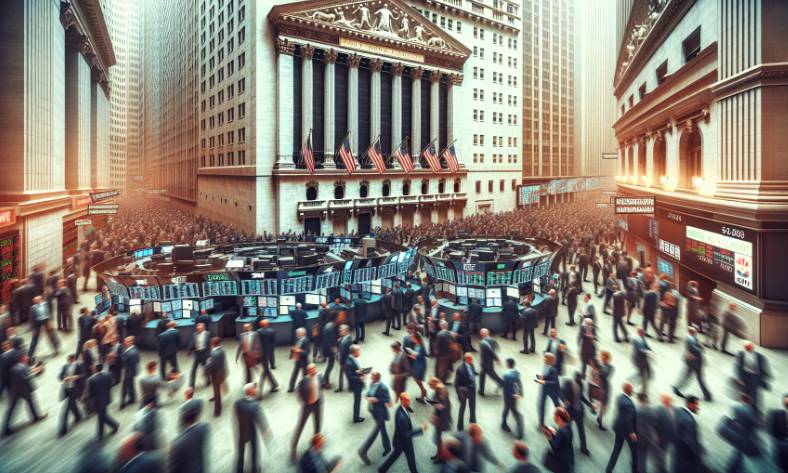Powell made it clear this week that he would not take action to save the market, and this statement angered Trump. As the tariff shock continues and the market falls again, Wall Street is desperately looking for a life-saving straw.
How desperate? Just look at the comprehensive collapse of various investment strategies this year - whether it is US stocks, cryptocurrencies, or corporate bonds, the returns have plummeted.
Bloomberg intelligence data shows that it is dragged down by the tariff effect.Of the 100 best-performing ETFs last year, 90 of them fell in 2025, with an average loss of 13%.。
at the same time,All kinds of "sleeping transactions" come back: Of the 20 worst-performing stock mutual funds in 2024, 9 have actually turned positive returns this year.
This shows that the most destructive economic policies in decades are making investment managers miserable and could disrupt the U.S. consumption and business environment.
As American companies sound profit alarms and market risk preferences fade as mergers and acquisitions cool down,Traders flock to safe-haven assets such as cash and gold, representative products of these two types of assets have also been recordedHuge inflow。
"People used to think that the United States has no political, macro or geopolitical risks and is a global safe haven. But the uncertainty of changes in government policies is shaking that belief."
According to Bloomberg David Cohne, Cook & Bynum Fund has risen nearly 14% in 2025, ranking among the top 2% of U.S. funds this year, and it is one of the worst performers in 2024. This is very common in star funds in 2025 -Many of them "died once" in 2024, but now they are rebounding strongly。
From celebrity technology stocks to digital asset trading, ETFs that rose by as much as 150% in 2024 fell one after another in 2025: Grayscale Bitcoin Trust Fund (GBTC) rose by more than 100% in 2024, but has fallen by nearly 10% this year; Invesco S&P500 Momentum ETF (SPMO) rose by 45% in 2024, and fell by 7% this year; Defiance Quantum ETF (QTUM) rose by nearly 50% last year and fell by more than 10% this year.
The market had hoped to quickly get out of April's turmoil, but Powell's speech this week broke his fantasy again - he said that rapidly changing trade policies could trigger inflation and the Fed would be unable to support the economy. Trump then publicly demanded the removal of Powell, the most violent blow to date in the drama that was destined to haunt investors for months.
A big change
All of this is hitting the asset classes that were still very popular in January this year, such as technology stocks and corporate bond-related funds. The S&P 500 fell 1.5% this week, closing down 9 of the past 12 weeks. The dollar fell about 0.7% this week, with the decline widening to more than 6% this year. The U.S. Treasury market volatility is still close to its highest level since the election.
"The anxiety in the market has almost made people wonder whether the United States is still the familiar United States. None of the safe assets in history have played a role this time, and even the Big Seven (referring to the seven major tech stocks in the U.S.) are no longer a safe haven."
Countries scramble to negotiate with the United States this week to avoid Trump's heavy taxes. Despite being temporarily granted a "probation", the World Trade Organization has lowered its trade expectations this year, saying that global trade volume will fall by 0.2% in 2025, nearly 3 percentage points lower than the absence of new tariffs.
The resistance of countries to the US financial order is giving birth to a group ofA new winner, including international strategies, low-valuation stocks, and traditional safe-haven assets such as U.S. Treasury bonds and precious metals.
SPDR Gold ETF (GLD) became one of the most inflows among U.S. ETFs as of April, with assets exceeding $100 billion for the first time.GLD has attracted more than US$8.4 billion in 2025, exceeding the inflow of Nasdaq giant ETF QQQ.
Investors seeking a place to avoid risks have also boughtUltra-short-term bond ETF, such as iShares' 0-March US Treasury ETF (SGOV), it has attracted about US$14 billion in 2025, far exceeding its annual performance in the past five years. SPDR Bloomberg January-March T-Bill ETF (BIL) also attracted nearly $13 billion in funding. Both of them have more money-making scale than the iShares Core S&P500 (IVV), a star ETF that lost 10% this year.
James St. Aubin, chief investment officer of Ocean Park Asset Management, is in charge of about $5 billion in funding, involving 12 trend strategies, and he also turned to cash. In early April, his model turned negative and drastically reduced its stock and fixed income positions. The company's currentcashPositions account for between 40% and 100%, one of the highest levels since 2022.
"I tend to be pessimistic. There is little good news that drives consumer or business spending and investment. People are already ‘freezing’. And this situation usually triggers a vicious cycle."
DWS Latin American Equity Fund Manager Scott Piper has benefited from market volatility, which has rebounded 13% this year after falling 28% in 2024. The weak dollar also helped his investment strategy. "The credibility of the U.S. market must be restored as soon as possible, and our huge deficit and potential economic slowdown have already put it under threat," he said.
















No comments yet